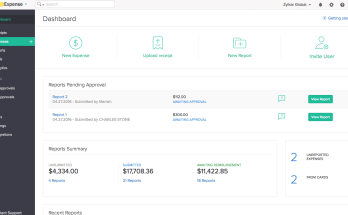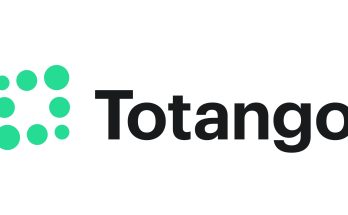Wireframe Software is now a crucial step in the design process. It not only helps to guarantee that design and usability problems are resolved early on, but also that all parties involved are on the same page. For those of you who are still unclear about what a wireframe software is, it is a mockup tool that enables you to rapidly construct a brief outline or blueprint of your design using straightforward shapes and basic styles to help get a sense of the finished product. Wireframe software aid in the creation of an effective user experience and performance while developing a website or app for your company. This is due to the fact that developing wireframe software is an excellent technique to design the organization and usability of your digital goods.
Without a free wireframe software, designing a website or application is like firing an arrow in the dark. It may go well, or it could entirely miss the target. By using wireframe software, you can build on crazy concepts and get a better sense of the larger picture while avoiding any potential errors throughout the design planning stage.
15 Best Wireframe Software for Designers To Use
Although wireframing might take a lot of time, wireframe software can help by providing capabilities that can expedite the design process. This post will talk about the top 15 wireframe software so that you can choose the best one for your projects. We’ll also talk about the most important things you should think about when choosing the best wireframe software online.
What a Wireframe Software Should Have
Finding a wireframing tool that will work for you while designing a website might be difficult because there are so many on the market. When choosing the best
for your website, you should think about the following:
- User Experience (UI). You should feel at ease using it if it has a simple and straightforward navigation system.
- Integrations Look for programs that can seamlessly integrate with your current ones, such as tools for collaboration and user testing.
- Price Before committing to a figma wireframe software, create a budget that is in line with the size of your team and your company’s demands.
- Beginners on a low budget may be able to use a free, open-source wireframing tool, although these tools often offer less functionality than expensive ones.
- features for cooperation and feedback. You should be able to share the design and get feedback from coworkers, clients, or other people who have a stake in the project.
- potential export markets Select a tool that enables you to export your mockup as HTML or another file type. This will facilitate a smoother handoff.
The best free mockup tools for speeding up design workflow In the next part, we’ll talk briefly about each wireframing tool, including its user interface, most important features, pros and cons, and cost.
#1. Adobe XD

Adobe XD is a vector-based design tool that can be used by anyone who wants to make interactive wireframe tools for business analyst and easy-to-use user interfaces. It comes with a number of UI elements that designers can use to make wireframes or mockups and test them on different devices. The sophisticated features offered by Adobe XD are as follows:
Features
- Adaptive scaling Depending on the size of the screen, design components enlarge or reduce in size.
- Repetition grid. By designing repeated parts and effects, users may reduce the number of tedious jobs and accelerate the design process.
- automatic animate A motion graphics tool is driven by AI for your UX design.
- Simply categorize your elements, then provide transitions and moves.
- 3D transformations Select individual parts and turn on the 3D option to quickly and easily convert items into 3D shapes.
- After that, use the canvas control to rotate and move the items.
- tools for voice interaction.
- Voice commands and audio playback are supported by Adobe XD.
- It makes it simple to design and preview voice assistant prototypes.
- Integrations It works seamlessly with other Adobe products like Photoshop and Illustrator.
To import any UI elements into Adobe XD, just drag and drop them there.
#2. Figma
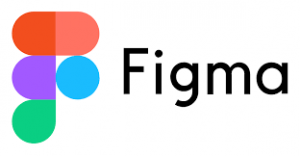
Figma is a powerful cloud-based design tool that lets you make apps quickly by dragging and dropping elements. It is well-suited for cooperation because of its straightforward and roomy architecture, which makes it easier to construct various concepts within a single project. Among its noteworthy attributes are:
Features
- is a brainstorming tool that uses an online whiteboard with diagramming and site mapping features.
- automatic layout For simple, responsive design, Figma’s auto layout component may expand vertically or horizontally.
- As you modify the text on buttons and lists or add or remove items, they are resized and readjusted.
- tools for interactive prototypes.
- Create sophisticated prototypes with tools like drag triggers and clever animation.
- The drag trigger lets the user control the transitions, while the smart animate function automatically animates related items and improves transitions that are already there.
- Accessible Figma is a browser-based application that works with all popular operating systems, including Windows, macOS, and Linux. This makes it simple to use.
- Mirror by Figma
- Users can preview designs on their iOS and Android phones by using the Figma desktop app.
- community-based system.
- Users can browse, view, and download templates, plugins, and widgets from the Figma community.
#3. Wireframe.CC
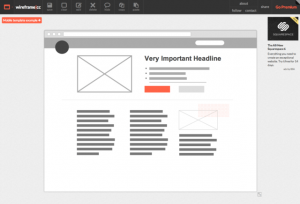
When looking for a quick and effective tool to create mockups for websites or mobile apps, Wireframe.CC is one of the best choices. The user interface of this web-based wireframing application is straightforward and clutter-free. Here are some standout characteristics of this tool:
Features
- cooperation in real-time. Users may collaborate on prototypes and give each other comments via a sharing link.
- History of revisions All of the users’ work is saved in its present state and is always available for them to access.
- flexible templates. There are wireframe software templates for tablets, smartphones, and desktop computers, among other devices.
#4. Cacoo

A virtual diagramming tool that enables several team projects is called Cacoo. Even though it wasn’t made to be a wireframe software, it has a large collection of templates and integrations that make wireframing more effective. The program may also be used to create sitemaps and other strategic planning diagrams. Numerous distinctive aspects of Cacoo include:
Features
- Tools for real-time collaboration Through comments, screen sharing, and video conferences, they allow team members to interact, discuss, and track changes.
- embedded schematics. When you make changes to a wiki page, website, or blog post, your diagrams should update automatically.
- Screen sharing and presentation software
- Participate in a live video conference while presenting your wireframe software.
- choices for exporting. Users can choose to export their work in a number of different file formats, including PNG, SVG, PDF, and PPT.
#5. Balsamiq
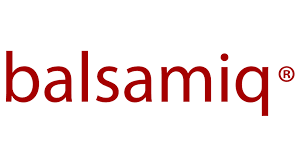
A wireframe software called Balsamiq makes it simple for users to make low-fidelity prototypes. It makes the design process faster by making wireframes that look like sketches and focusing more on the text and structure than on small details. These are some of its great qualities:
Features
- editor with drag and drop.
- Design components are simply added, rearranged, or removed.
- For those just learning the basics of prototyping, this functionality is really helpful.
- Quick-add capability The Quick Add feature in Balsamiq makes adding UI components simple.
- You can get a list of ideas by starting to type the name of a UI control or symbol.
- linking function. It gives people a simple method to connect their wireframes.
- Putting together click-through prototypes and doing usability tests are helpful.
- potential export markets There are several export formats available, including PNG, PDF, and JSON.
#6. Axure RP

One of the greatest wireframing programs is Axure RP, which supports both low-and high-fidelity wireframe software. None of the tasks, including making, testing, putting in place, and getting feedback from users, require coding. It has outstanding attributes like:
Features
- projects with password protection.
- Prototypes should be sent with password protection for added security.
- See adaptations. By rearranging and restyling the page’s parts to match various screen sizes, a set of adaptable views may be created.
- flow charts With the connector tool, you can add components and draw intelligent connections between them to make flowcharts, user flows, business process models, and other types of flow diagrams.
- movable panels. Users may simultaneously examine and edit all of a dynamic panel’s states.
- Switching between panels when developing a prototype is now simpler.
#7. Justinmind

UX/UI designers may use Justinmind, a straightforward yet efficient wireframing tool, to build everything from simple wireframe software to interactive prototypes. It gives you a number of integrated UI kits and design tools that speed up the process of making a prototype. Its noteworthy characteristics include:
Features
- sophisticated design tools.
- With its design tools, you can use conditions, sequences, and transition effects to make interactive prototypes for your web and mobile apps.
- creating documentation.
- By exporting projects to MS Word or PDF files, you can make spec sheets to hand out at meetings.
- As an alternative, you can create personalized document templates.
- masters and templates
- Make UI elements and template groups you will use again and again.
- Plug-ins and integration.
- Using tools like Sketch and Adobe XD, it’s easy to make interactive prototypes using different technologies.
- viewers and emulators.
- Make accurate simulations of your prototypes to test your design hypotheses on actual users.
- Test live prototypes on mobile devices as well.
#8. Sketch

The sketch is a popular vector design app that can be used on the go. It has a wide range of features for wireframing and designing vector icons. Stakeholders may communicate and create handoffs to developers using the cloud-based platform. The highlights of Sketch include:
Features
- It is simple to use editing software. Since Sketch has simple drag-and-drop tools like Sketch Symbols for making reusable components and Smart Guides to ensure precise alignment, generating mockups is made simple.
- strong extensions To improve functionality and automate operations, it offers a number of plugins and connectors.
- It also comes with Sketch Assistant, which helps you make sure your design is perfect by pointing out problems like missing layers and not enough contrast.
- co-editing. On the same sketch file, several designers may work together in real-time.
#9. UXPin

Building interactive wireframe software and design flows is easy with UXPin. The tool speeds up development by enabling code-based design with built-in UI components. These benefits of this wireframing tool include the following:
Features
- automated style manual. Maintain a master list of all your fonts, colors, and other materials in one location.
- It will support maintaining a constant design throughout the process.
- multi-platform. Users are able to work from any device thanks to UXPin’s support for macOS, Windows, and browsers.
- aspects of interactive forms. Use interactive components to create user experiences that are more realistic.
- Users can add animated states and conditional logic to their prototypes to make usability testing work better.
- facets of web accessibility. You can make prototypes that are easy to use by using built-in tools like the Contrast Checker and Color Blindness Simulator.
#10. MockFlow
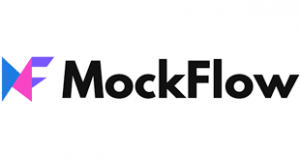
The software Mockflow is used for quick wireframing and UI planning. Beginners and non-technical users will find it to be a great choice because it is simple to learn. This wireframe software characteristics are as follows:
Features
- presentation equipment. Your UI wireframes may be turned into interesting and polished presentations by adding effects and creating slide layouts.
- system of revision history. Designers can easily keep track of all iterations with the help of this functionality.
- Tools for team cooperation MockFlow enables structured and methodical team collaboration.
- For ease of access, it divides up individual projects into a number of folders and subpages.
- You may also give your team members access to edit, review, or administer.
- security procedures at the enterprise level.
- It always keeps data safe by using technologies such as SSL, SSO, and secure sharing.
#11. Framer
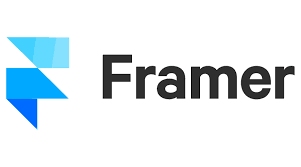
One of the greatest wireframe software for producing interactive animations and prototypes is Framer. Because of its interactive capabilities, usability testing turns out better. Users can construct a prototype that seems like a genuine app. Here are some of its distinguishing qualities:
Features
- bespoke typefaces. Import a typeface that is unique to you.
- intelligent parts. You can improve the look and feel of your prototype by adding different interactive elements.
- packages for private teams. Share and publish parts that are solely available to your team.
- Magical movement Great levels of control over the animation layers and transitions are offered.
#12. Moqups
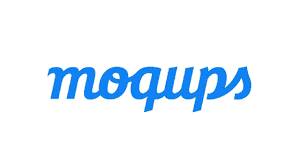
Moqups is another web-based UX tool that lets users make prototypes, mockups, and wireframe software for a wide range of projects. The user-friendly design of this program makes cooperation simple. Some of the major characteristics of this wireframe software are listed below:
Features
- streamlined process Without switching platforms, users may simply transition between diagrams and wireframes.
- adjustable alignment and spacing. Utilizing features like quick alignment and snap-to-grid makes it simple to make exact alterations to your prototype.
- Additionally, you may rename and modify items in bulk.
- Collaboration is easy. It permits in-the-moment changes, comments, and feedback to enhance teamwork.
- several pre-built templates. From eCommerce wireframe software to blog wireframes, it has a wide range of UI template options that can be changed for different uses.
- multilingual assistance. Moqups is currently available in English, Spanish, German, Italian, and Korean, among other languages.
#13. Fluid UI

A user-friendly prototype software with strong wireframing and prototyping capabilities is Fluid UI. Users can make wireframe software for web or mobile apps with their drag-and-drop interface and UI shape library. Among its best qualities are its internal library of more than 2,000 desktop and mobile components for honed prototype concepts.
Features
- Additionally, users have the option to add and store their own artwork.
- a simple connection scheme. Prototypes can be connected to show how they relate to one another.
- collaborating capabilities. There are several beneficial elements that enable collaboration and feedback, including built-in comments, video presentations, and live video conferencing.
#14. Proto.io

One of the top wireframe programs for creating responsive user-interface prototypes for mobile apps is proto.io. Here are a few of its key characteristics:
Features
- spaces on proto.io. provides a setting for collaboration where designers may display interactive prototypes.
- Users may look at the prototypes and discover how the designs are made.
- The Wizard of Interactions
- Drag and drop a connection onto an UI element, a container, a screen, or a state to set up an interaction automatically.
- system of an animation timeline.
- Users may change the animation’s duration, delay, and easing effect.
- a variety of preview choices. On mobile devices and in a web browser, users may preview their prototypes.
- You can also preview the prototype offline if you download it with the Proto.io iOS or Android Player app.
- strong sharing capabilities. Users can share their prototypes by giving URLs with different sharing options, like requiring a password or letting anyone share.
- Additionally, it has an analytics component that records all the views, watchers, and links made.
#15. Marvel
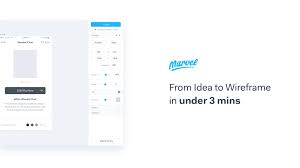
Users may collaborate on the creation, testing, and development with Marvel, a no-code prototyping tool. It gives you everything you need to make digital products, turning mockups into interactive design guidelines. Customers will gain from the following features:
Features
- Integrations Marvel provides third-party connectors to improve the functionality of its designs.
- They include well-known social media programs like YouTube as well as productivity and workflow tools like Microsoft Teams, Jira, and Dropbox.
- user research. It is simple to obtain input to enhance the user experience thanks to the tool that captures how users interact with your prototype.
- tool for design handoff. Using Marvel’s handoff tool, design specs are made and packaged. The tool also makes a shared URL.
- To speed up the design process, copy and paste the elements’ generated CSS, Swift, and Android XML code from this tool.
- Adaptable templates It offers pre-made wireframe templates for well-known devices.
- For client styling, there is also a vast collection of pre-made materials.

